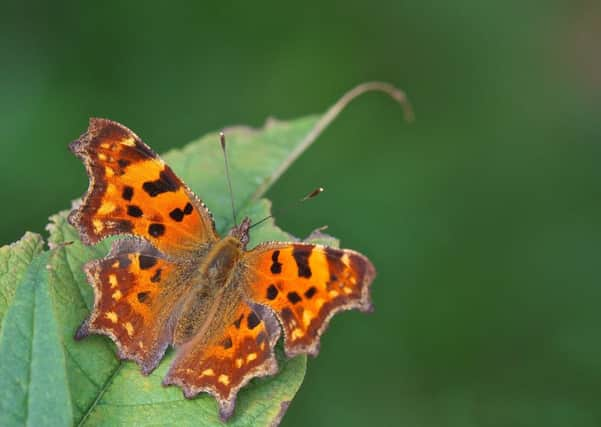Help track progress of winged wonder's revival


Despite a few tricky years recently, comma butterflies have enjoyed huge population growth - up by 138 per cent in 40 years.
Experts believe a combination of climate change and the comma’s increased use of nettles as a food plant for its caterpillars may explain a dramatic expansion in its range.
Advertisement
Hide AdAdvertisement
Hide AdAt the turn of the 20th century the comma, which has distinctive ragged wing edges, was restricted to a few counties in the Welsh borders and south east England, but since the 1970s it has spread north 250 miles throughout England, Wales and the Isle of Man into southern and eastern Scotland.
While the species has flourished, poor years in 2012 and 2016 have alerted conservationists, who are now urging people to help track its progress by taking part in the Butterfly Conservation charity’s Big Butterfly Count. It is hoped the survey will offer an insight into the comma’s long-term population fluctuations.
Butterfly Conservation president, Sir David Attenborough, said: “Canals and rivers are fantastic locations for many species of butterfly.
“The comma is one of our most exquisite butterflies and hearteningly is also something of a butterfly success story.”
Advertisement
Hide AdAdvertisement
Hide AdIts common habitats include brambles, thistles and knapweed along rivers and canals, while its caterpillars feed on nettles and hops in the same areas.
Butterfly Conservation’s head of recording, Richard Fox, said: “We need to continue to monitor its progress, especially after a worse-than-usual year in 2016.”
The Big Butterfly Count runs until August 6. For more details, visit www.bigbutterflycount.org